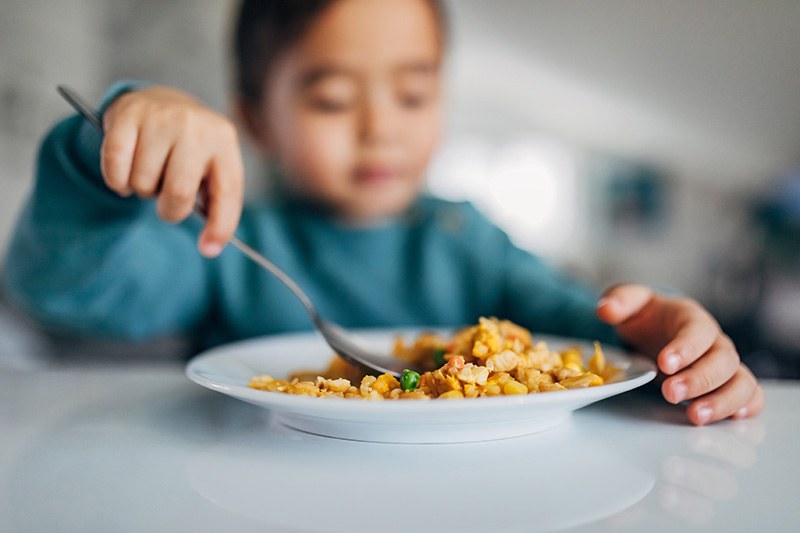Posted: January 30, 2025
While toddlers are building their palates it is an ideal time to introduce new flavors. Find tips for successfully introducing ethnic foods to young children that reflect their culture. BKC's new course presents ways to specifically include more culturally competent meals from multiple cultural backgrounds.

Close-up of a bowl Thai food and a spoon held by a toddler blurred out in the background.
Feeding toddlers can be both a rewarding and challenging experience as you allow children to explore new foods and learn the skill of eating. The early years while children are building their palates are an ideal time to expose them to culturally diverse foods and flavors. It is important to provide foods that reflect the culture of the children in your setting. An integral part of laying a foundation for healthy lifelong eating habits is to provide flavorful culturally responsive food options to infants and toddlers. Culturally responsive foods focus on food preferences from different cultural backgrounds. It also addresses the accessibility of those foods and the cultural practices of the community.
No matter which cultural communities you serve, it is critical to provide age-appropriate, nutrient-dense foods to make every bite count. Some tips for success when introducing ethnic foods to young children include:
- Pair one ethnic food with food that is more familiar.
- Use milder spices or smaller amounts of spice when making foods that contain spices unique to a certain culture.
- Let children use all their senses to experience a food: smell, look at, touch, and finally taste.
- Encourage them to try it, but do not force them. Give positive encouragement for just using their other senses of touch and smell.
- Look for recipes that use some ethnic ingredients in different ways to expand the presentation of cultural foods.
- Ask a parent of an ethnic student what foods their child enjoys and for recipes of well-accepted foods.
Better Kid Care's new course, "Supporting Safe Self-Feeding with Young Toddlers," presents ways to specifically include more culturally competent meals for multiple cultural backgrounds, including African, Black, and Caribbean (ABC), Middle Eastern, Polynesian, Chinese, Vietnamese, Hispanic and Spanish-speaking, and Native American. Course resources include menu inspiration and recipes. To check out a sampling of the course resources, open the CACFP Vegetable and Fruit Snack Menu with Cultural Recipe Options from the Association of State Public Health Nutritionists.

